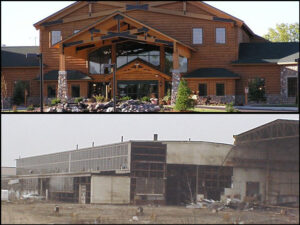To better protect the Wisconsin Department of Natural Resources (DNR)’s systems, the DNR is switching to a new identity system called MyWisconsin ID that will also require multi-factor authentication (MFA).
Currently, a WAMS ID is used to log into the RR Program Submittal Portal (Submittal Portal). The Submittal Portal enables customers to submit forms and documents related to the cleanup of contamination under Wisconsin’s cleanup rules (Wisconsin Administrative Code chs. NR 700-799) and to report hazardous substance discharges to the environment identified through laboratory analysis. MyWisconsin ID will replace your WAMS ID and will also be used to access other state of Wisconsin online systems.
What Is MyWisconsin ID?
MyWisconsin ID is a secure login system used across state government, allowing individuals to access participating online state services and systems using a single user ID and password.
What Is Multi-Factor Authentication (MFA)?
Multi-factor authentication is a way to prove who you are by using two different types of security checks. For example, after entering your password, you may also have to enter a code sent to your mobile phone. You may have used this method of authentication when logging into your bank or other personal accounts.
Why Is MFA Required?
- Passwords can be stolen or hacked, making them less secure when used alone.
- MFA adds an extra layer of security to make sure that only you can access your account.
What do I need to do?
The transition to MyWisconsin ID and MFA for the Submittal Portal will occur on Oct. 27, 2025. This message is just to let you know about the upcoming change.
Before the switch, you will get another email with simple steps on how to set up your MyWisconsin ID account and multi-factor authentication. The timing of this system’s transition may be adjusted as needed.
Note that state agencies and programs are transitioning to MyWisconsin ID at different times between now and December 2026. The timeline in this message only applies to the Submittal Portal. Some state systems will transition to using MyWisconsin ID sooner than others, so a WAMS ID may be needed for some systems, while a MyWisconsin ID will be needed for others.
Questions?
- Visit the MyWisconsin ID FAQ webpage for answers to common questions or contact the MyWisconsin ID account service desk at 608-471-6667.
- Contact Sonya Rowe; Sonya.Rowe@wisconsin.gov; for support with the Submittal Portal.

